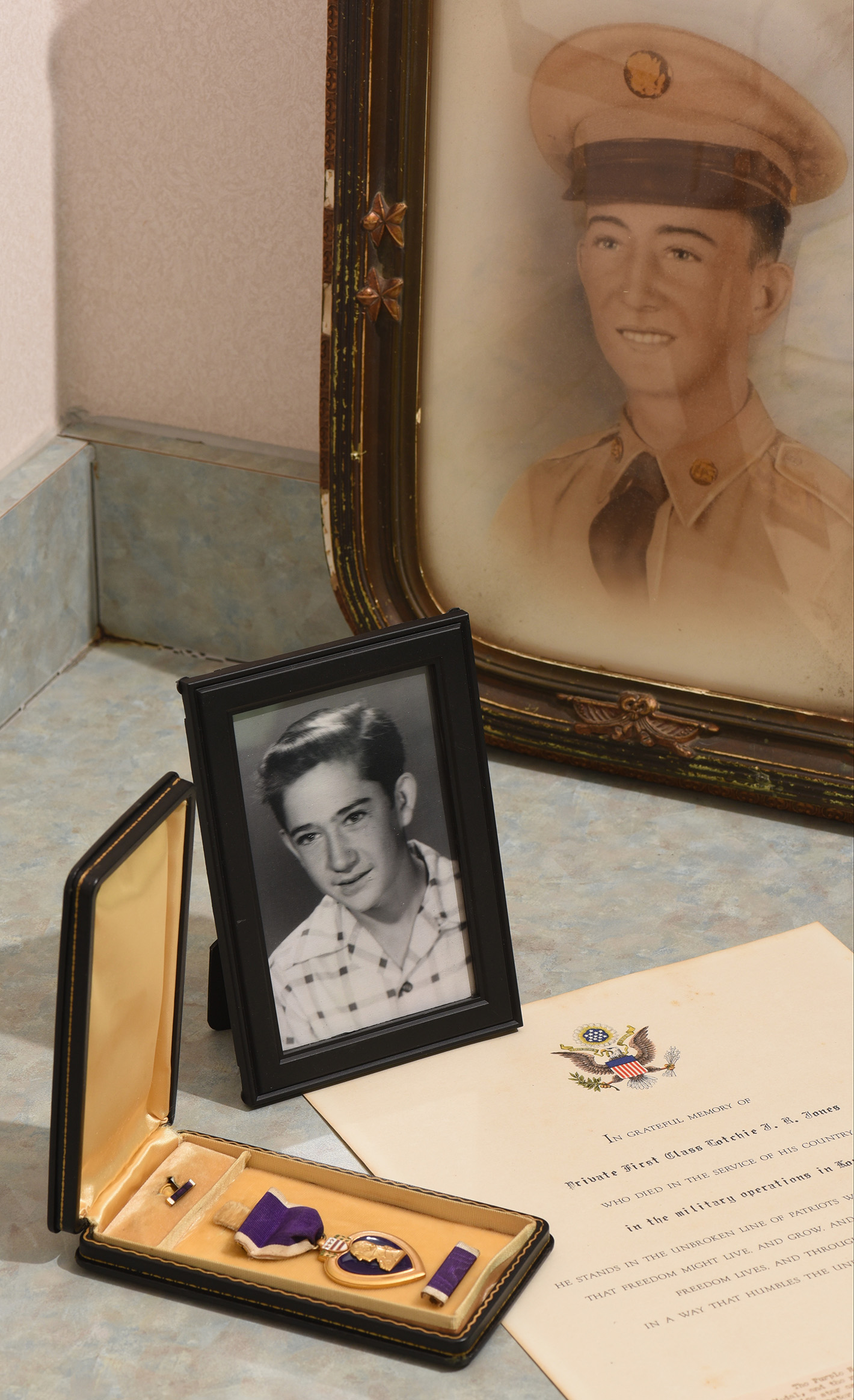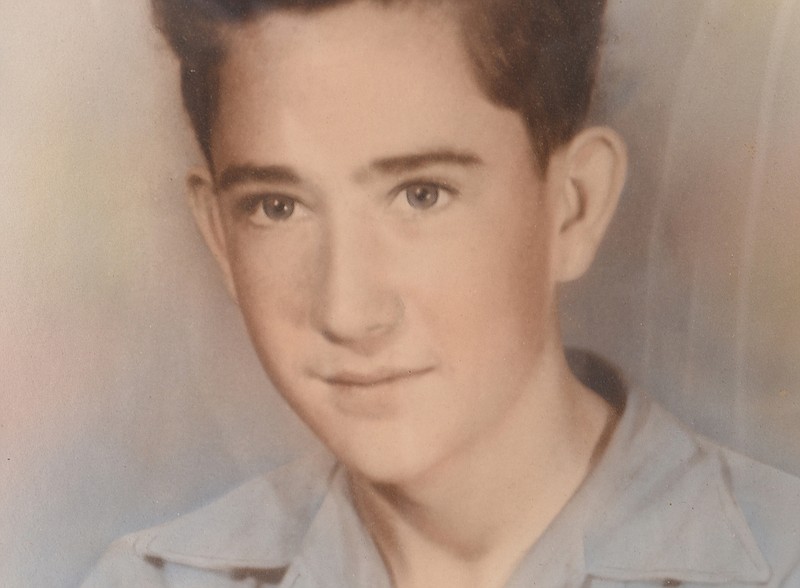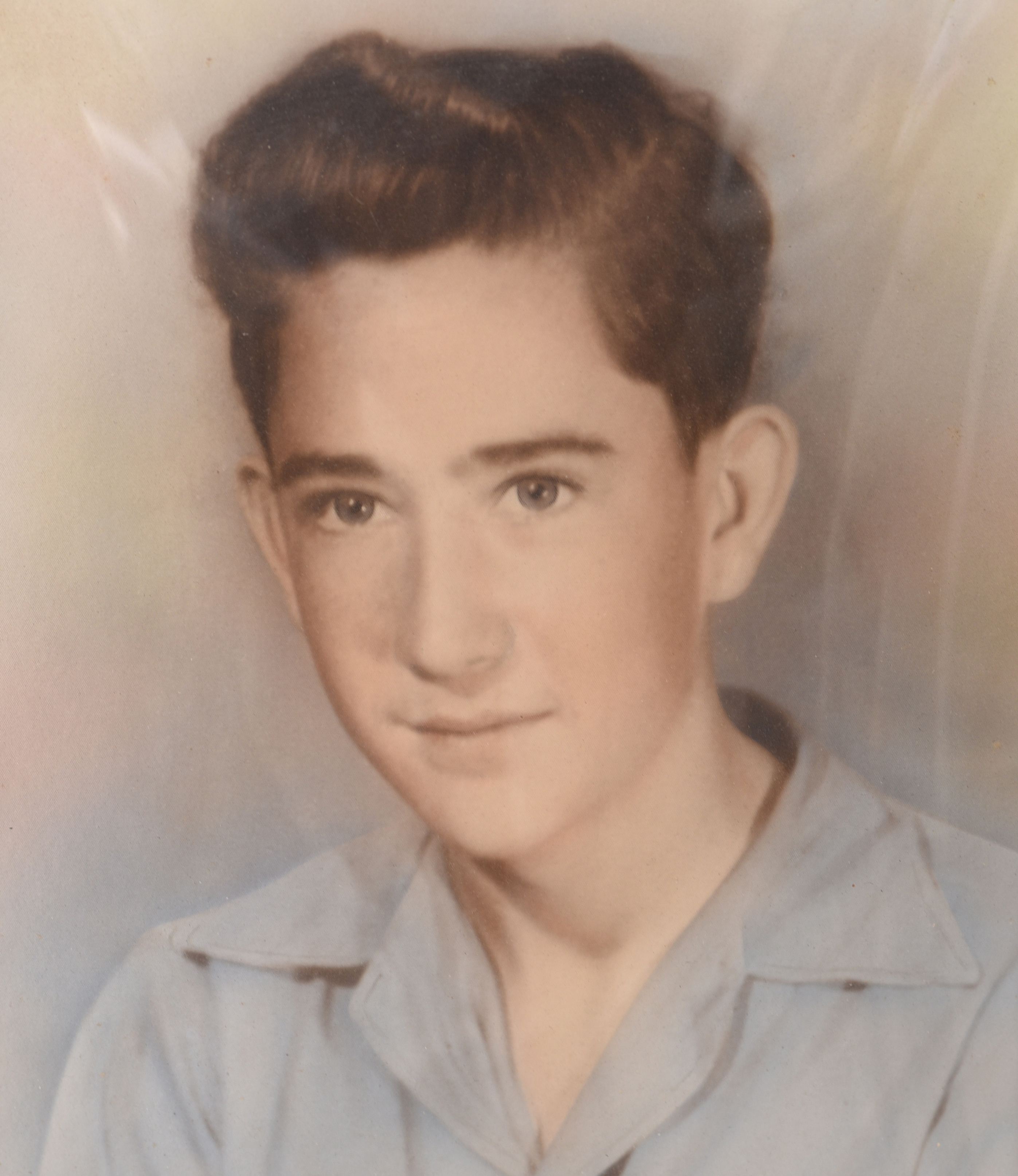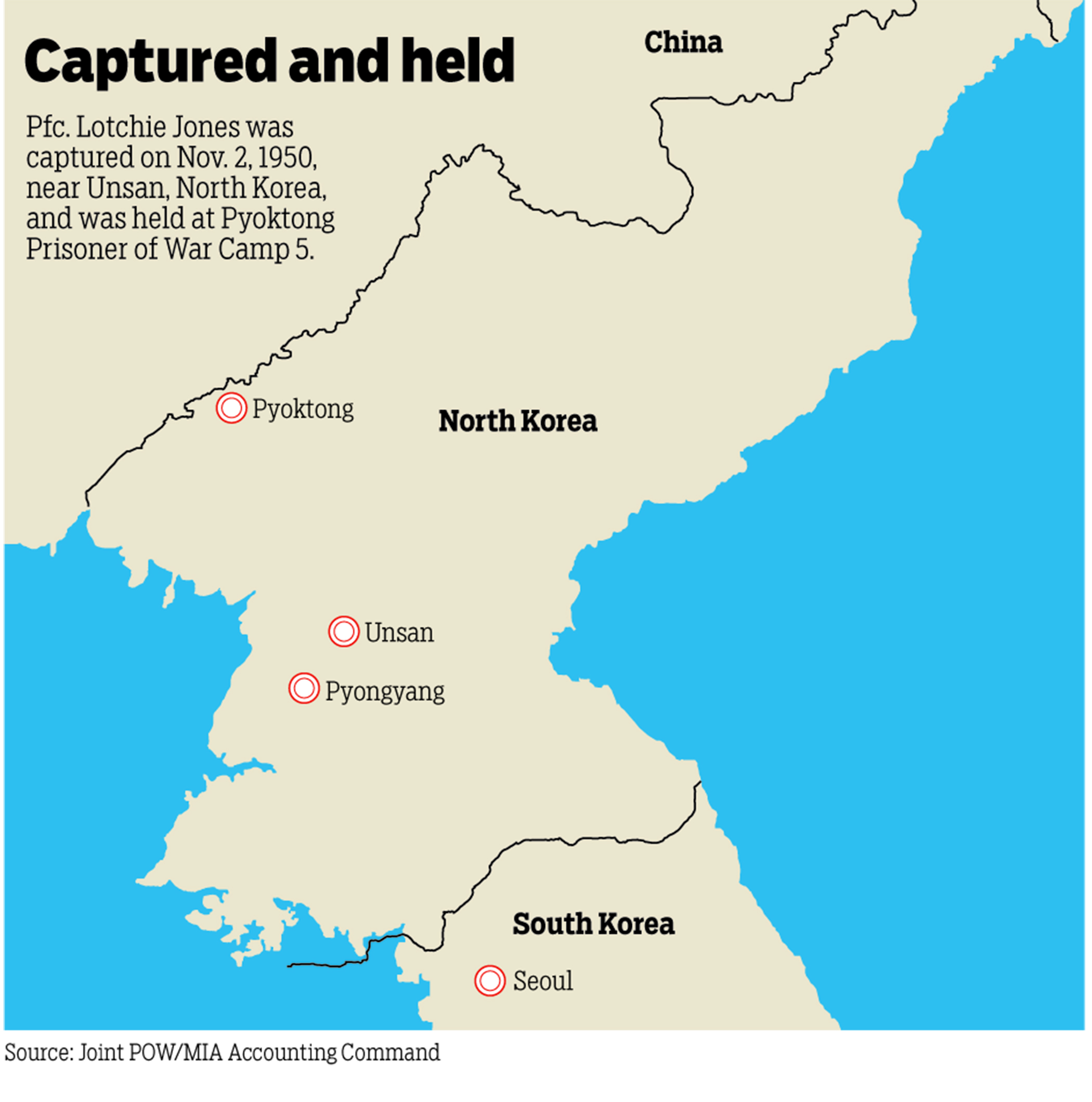If you go
* Thursday: Visitation is set for 2 to 8 p.m. CST at Tate Funeral Home, 450 Mel Dixon Lane in Jasper.* Friday: The funeral service will be held at the funeral home at 11:30 a.m. CST. Jones will be buried in Chattanooga National Cemetery at 2:30 p.m.
Why Lotchie?
William "Windy Bill" Jones -- Lotchia Allen Jones' grandfather and Lotchie J.R. Jones' and his siblings' father -- at one time worked for a coal steward in Kentucky named "Lotchie." That Lotchie one day sent Windy Bill to the company store for supplies. While Windy Bill was at the store picking up supplies, an explosion at the mine killed coal steward Lotchie. Windy Bill survived and named his next-born son in honor of the man who sent him on the life-saving errand. Lotchia Allen Jones was named in 1970 for his uncle, with a one-letter variation, and his father, Troy Allen. Now, Lotchia Allen Jones' 10-month old son wears the mantle too, Karsten Lotchia Jones.
Lotchie John Ray Jones' family
Listed oldest to youngest (relationship to Lotchie): * Faye Jones Williams (sister) * Troy Allen Jones (brother) * M.V. "Jonsie" Jones (brother) * Mary Jones Cagle Cantrell (sister) * William Issac "Minky" Jones (brother) * Lotchie John Ray Jones * Mamie Lou Jones Wells (sister) * Tim P. Jones (brother) Source: Lotchie John Ray Jones family members
 Lotchia Jones talks about his uncle, Lotchie John Ray Jones, on Monday, Mar. 2, 2015, in Jasper, Tenn. Lotchie Jones was captured as a prisoner of war in North Korea in 1950 and presumed dead by the Army a couple of years later. His remains were interred in the National Memorial Cemetery of the Pacific in Hawaii as an unidentified soldier, but were recently identified and will return home this week, where he will buried with honor at the National Cemetery in Chattanooga.
Lotchia Jones talks about his uncle, Lotchie John Ray Jones, on Monday, Mar. 2, 2015, in Jasper, Tenn. Lotchie Jones was captured as a prisoner of war in North Korea in 1950 and presumed dead by the Army a couple of years later. His remains were interred in the National Memorial Cemetery of the Pacific in Hawaii as an unidentified soldier, but were recently identified and will return home this week, where he will buried with honor at the National Cemetery in Chattanooga. JASPER, Tenn. -- He was just 17.
A career in the military was all the Marion County native wanted.
Lotchie John Ray Jones even quit high school and got his mom and dad to sign the papers to get him in the Army before he was a legal adult.
But his career in uniform would last just 293 days -- an 18th birthday, Christmas and New Year's during 118 days of captivity over a harsh North Korean winter before he died in enemy territory.
As Jones' remains arrive in Nashville this morning, his family members and those who know his story will bear witness to the weight of his sacrifice.
When he left for service in 1950, Jones was a teenager described as "kind and tender," the sixth of eight children, a "gentleman."
Jones had a hearty respect for the military service of his elder brothers, all of whom returned safely to home soil, according to his namesake and nephew, Lotchia Allen Jones. (They pronounce it "Lah-chee.")
"They were all military men, Army men," Lotchia Jones said on Monday. "Lotchie, being the youngest, didn't want to go to school and wanted to go in the Army. He wanted to be a career Army man."
It was May when Lotchie Jones got on a Greyhound bus at the Jasper Drug Store and headed to basic training at Fort Knox, Ky. The war began the next month, on June 25.
From Fort Knox, he went west to Fort Lawton in Seattle where he shipped out to Korea on Sept. 22 to assume his role in the war.
Jones was a private first class in the U.S. Army's Company "B," 1st Battalion, 8th Cavalry Regiment, 1st Cavalry Division when he went missing in action Nov. 2, 1950, in the area of Unsan about 100 miles north of the 38th parallel that divides North Korea from South Korea. Jones' Company "B" was among the numerous units involved in the push north over the 38th parallel as American and South Korean forces battled North Koreans and Chinese.
A line at the end of a Nov. 24, 1950, letter from Adjutant General of the Army, Maj. Gen. Edward F. Witsell, to Jones' parents, Millie and James Jones, recognizes the pain of families whose loved ones are missing in action.
The letter followed an initial letter informing them their son had gone missing on the battlefield on Nov. 2, 1950.
"I know that added distress is caused by failure to receive more information or details. Therefore, I wish to assure you that at any time additional information is received it will be transmitted to you without delay," Witsell wrote.
"I wish to emphasize that every effort is exerted continuously to clear up the status of our personnel. Under battle conditions this is a difficult task as you must readily realize," he wrote. "Permit me to extend to you my heartfelt sympathy during this period of uncertainty."
According to records documenting Jones' identification, eyewitness accounts later established that Chinese forces overran the positions held by Jones' unit. After his capture, he was imprisoned at the Pyoktong Prisoner of War Camp 5 into February 1951.
During his captivity at Camp 5, Jones died from unknown causes. Military officials estimated the date of his death as Feb. 28, 1951, as it was unknown what day he actually died.
It was 1953 -- three years of uncertainty -- before Jones was officially declared dead. And still he wasn't home.
The Korean War ended on July 27, 1953.
In 1954, Chinese forces turned over remains recovered at POW Camp 5, including some that initially were mistakenly identified as "Delano B. Mulder." But that identification couldn't be confirmed, nor could the remains be associated with others known to have been imprisoned there, so in 1956 the unidentifiable remains were interred at the National Memorial Cemetery of the Pacific in Honolulu, Hawaii, where they remained until July 2014.
That's the year the Joint POW/MIA Accounting Command's Central Identification Laboratory at Joint Base Pearl Harbor-Hickam in Hawaii took another look at the records and determined that resources now were available to identify the remains dubbed "X-14516."
The remains were exhumed July 10, 2014. Researchers used chest radiographs, dental records and skeletal remains to confirm that "X-14516" was an 18-year-old Marion County boy -- a military man less than a year into his career -- a man who gave his life in service to his country.
And now he could go home.
"I'm just amazed and astonished that my family has this history," Lotchia Jones said. "I never expected they would find him."
Jones will be buried in Chattanooga National Cemetery on Friday afternoon.
During his few months overseas, Jones had time to write but a few letters home, his nephew said this week.
The teen soldier from Jasper "wanted paper and pencils and said that he was writing letters by candlelight, and he wanted hard candy for Christmas," Lotchia Jones said.
Jones never mentioned being worried about being killed or captured in combat, his nephew said.
Lotchia Jones hopes people will take from his uncle's story the price he paid and the need for everyone "to remember the honor and the valor and the glory of the POW," he said. "Remember the POWs and never forget them."
So will read the marker that will stand at Jones' final resting place: "Never Forgotten."
Contact staff writer Ben Benton at bbenton@timesfreepress.com or twitter.com/BenBenton or www.facebook.com/ben.benton1 or 423-757-6569.
 An old photograph of Lotchie John Ray Jones as a civilian is seen Monday, Mar. 2, 2015, in Jasper, Tenn., between a photograph of him as an Army soldier and the Purple Heart he was awarded posthumously. At lower right is the official notification of death signed by President Dwight Eisenhower. Lotchie Jones was captured as a prisoner of war in North Korea in 1950 and presumed dead by the Army a couple of years later. His remains were interred in the National Memorial Cemetery of the Pacific in Hawaii as an unidentified soldier, but were recently identified and will return home this week, where he will buried with honor at the National Cemetery in Chattanooga.
An old photograph of Lotchie John Ray Jones as a civilian is seen Monday, Mar. 2, 2015, in Jasper, Tenn., between a photograph of him as an Army soldier and the Purple Heart he was awarded posthumously. At lower right is the official notification of death signed by President Dwight Eisenhower. Lotchie Jones was captured as a prisoner of war in North Korea in 1950 and presumed dead by the Army a couple of years later. His remains were interred in the National Memorial Cemetery of the Pacific in Hawaii as an unidentified soldier, but were recently identified and will return home this week, where he will buried with honor at the National Cemetery in Chattanooga. 

